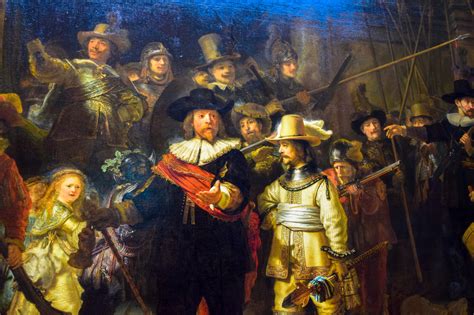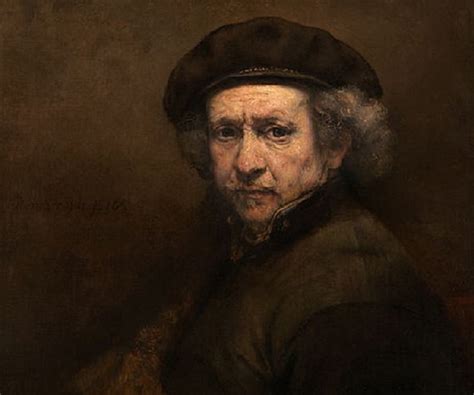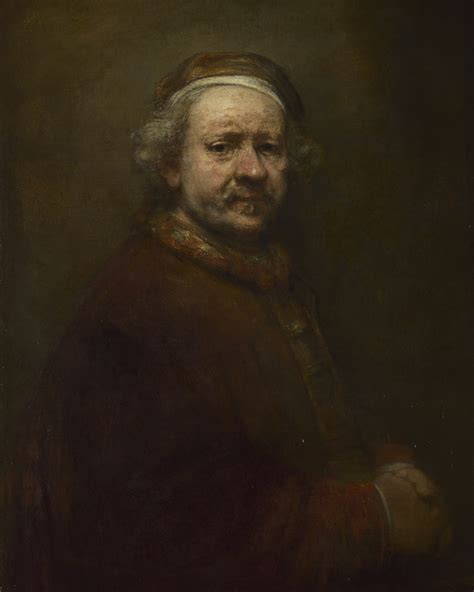In the world of fine arts, there are certain names that resonate with an unparalleled sense of admiration and reverence. These names encapsulate the very essence of artistic brilliance, pushing the boundaries of creativity and captivating audiences across generations. One such name that effortlessly commands attention is that of Rembrandt van Rijn, a distinguished painter whose enduring legacy continues to inspire and awe.
Boasting a profound mastery of his craft, Rembrandt crafted a unique body of work that showcases his unwavering commitment to artistic expression. With a deft hand and an intuitive understanding of light and shadow, this luminary artist breathed life into his creations, infusing them with emotion and a remarkable sense of realism. His ability to evoke a range of sentiments through brushstrokes and colors set him apart as a true pioneer of his time.
What sets Rembrandt apart from his contemporaries is not only his technical prowess but also his ability to bring forth the inherent beauty of human emotion. Through his portraits, Rembrandt delved deep into the human psyche, capturing the complexities of human existence with each stroke of his brush. Whether it was a beaming smile or a melancholic gaze, the artist effortlessly conveyed the essence of his subjects, leaving an indelible mark on the canvas and the hearts of those who beheld his works.
Rembrandt's influence transcends time and geography, and his works continue to captivate art enthusiasts from all walks of life. Even today, centuries after his passing, his paintings remain a source of fascination and inspiration for artists and connoisseurs alike. The profound impact of his artistry can be witnessed in the numerous exhibitions held worldwide, where his works are displayed with great pride, allowing admirers to bask in the unparalleled beauty that only Rembrandt could create.
In this article, we will embark on a journey to explore the enduring legacy of Rembrandt, unraveling the layers of his artistry and shedding light on the profound impact he has had on the world of painting. Through an exploration of his life, style, and iconic works, we will come to appreciate the genius of this Dutch luminary and his unparalleled contribution to the rich tapestry of art history.
Early Life and Training of Rembrandt

The formative years and educational background of the renowned artist Rembrandt have played a crucial role in shaping his exceptional artistic talent and distinctive style. This section delves into the early life and training of Rembrandt, shedding light on his upbringing and the influences that helped foster his artistic aptitude.
Rembrandt Harmenszoon van Rijn, born on July 15, 1606, in Leiden, Netherlands, hailed from a modest family. His father, Harmen Gerritszoon van Rijn, was a miller, while his mother, Neeltgen Willemsdochter van Zuytbrouck, was the daughter of a baker. Rembrandt's humble origins instilled in him an appreciation for the ordinary aspects of everyday life, which later became a prominent theme in his artworks.
During his early years, Rembrandt's artistic inclination became evident, prompting his parents to nurture his talent. At the tender age of 14, he enrolled at the Latin School in Leiden, where he received a classical education. While academically inclined, Rembrandt's true passion lay in art, which led him to pursue an apprenticeship with the renowned history painter Jacob van Swanenburgh.
| Year | Milestone |
|---|---|
| 1620 | Rembrandt begins his apprenticeship with Jacob van Swanenburgh |
| 1624 | Rembrandt moves to Amsterdam to study with Pieter Lastman |
| 1627 | Rembrandt establishes his own studio in Leiden |
Under Swanenburgh's guidance, Rembrandt honed his technical skills and learned the foundations of composition and perspective. However, his thirst for knowledge and artistic growth led him to seek further tutelage and inspiration outside of Leiden. In 1624, Rembrandt moved to Amsterdam to become a student of the esteemed history painter Pieter Lastman, known for his biblical and mythological works.
During his time in Amsterdam, Rembrandt absorbed various artistic influences and techniques, which greatly expanded his understanding of light, shadow, and the dramatic use of color. This period marked an important phase in Rembrandt's artistic development and laid the groundwork for the distinct style that would later become synonymous with his name.
After completing his apprenticeships, Rembrandt returned to Leiden in 1627 and established his own thriving studio, attracting numerous students and art enthusiasts. This marked the beginning of his illustrious career as a painter and teacher, setting the stage for the remarkable legacy he would create in the world of art.
The Signature Style and Mastery of Rembrandt's Artworks
Delve into the captivating world of Rembrandt's paintings, where the Dutch artist's unique style and innovative techniques come to life. Each brushstroke and carefully crafted composition demonstrate his exceptional talent and everlasting influence on the art world.
In Rembrandt's artworks, one can witness a profound mastery of light and shadow, which became a defining characteristic of his style. Through his skilled use of chiaroscuro, the interplay between light and dark, Rembrandt created a sense of depth and drama, adding a captivating dimension to his subjects. His ability to capture the subtlest shifts in light and shade allowed him to convey a wide range of emotions and bring his subjects to life on the canvas.
A distinctive feature of Rembrandt's paintings is his unparalleled talent for capturing the human spirit. His portraits, in particular, reveal an unparalleled ability to depict the innermost thoughts and emotions of his subjects. With his keen observation and empathy, Rembrandt went beyond mere representation, painting the soul and essence of the individuals he portrayed. Each brushstroke, from the delicate lines of the face to the expressive eyes, tells a story and invites the viewer to connect with the subject on a deeper level.
Additionally, Rembrandt's innovative use of texture and surface in his paintings added an extra layer of depth and realism. He employed various techniques, such as impasto, in which thick layers of paint were applied to the canvas, creating a three-dimensional effect. This technique, combined with his masterful use of light and shadow, allowed Rembrandt to achieve a remarkable level of detail and realism in his artworks.
Furthermore, Rembrandt's skillful manipulation of color added a sense of vibrancy and atmosphere to his paintings. His careful selection and juxtaposition of different hues enhanced the mood and conveyed the intended message of each artwork. Whether it was the warm ochre tones in his biblical scenes or the subtle variations of skin tones in his portraits, Rembrandt's color palette played a crucial role in evoking emotions and immersing the viewer in the narrative of the painting.
Rembrandt's legacy as a master of painting continues to captivate and inspire artists and art enthusiasts around the world. His signature style, characterized by his mastery of light and shadow, ability to capture the human spirit, innovative use of texture, and skillful manipulation of color, remains unparalleled. Exploring the intricacies of Rembrandt's techniques and style is an enriching experience that unveils the genius of this Dutch artistic legend.
| Distinctive Features | Mastery of Light and Shadow | Human Spirit Portrayal | Texture and Surface Techniques | Manipulation of Color |
|---|---|---|---|---|
| Vivid brushstrokes | Chiaroscuro technique | Emotional depth | Impasto technique | Strategic color selection |
| Dramatic use of light and dark | Sense of depth | Capturing innermost thoughts | Three-dimensional effect | Enhancing mood and atmosphere |
| Expressive portrayal | Emotional impact | Realism through texture | Remarkable level of detail | Evoke emotions and narrative |
Famous Artworks by Rembrandt

Delve into the remarkable creations of one of the most renowned painters in history - Rembrandt. This section unveils a selection of the master's iconic artworks, each bearing its own distinctive charm and captivating narrative.
The Night Watch
In this captivating masterpiece, Rembrandt immortalizes a group of Amsterdam militiamen. The painting showcases a mesmerizing interplay of light and shadow, emphasizing the key figures amidst the dynamic scene. The commanding use of brushwork and attention to detail represent Rembrandt's unrivaled skill and mastery of his craft.
Self-Portrait with Two Circles
A true testament to Rembrandt's introspection and self-reflection, this self-portrait epitomizes his ability to convey profound emotions through his art. The interplay of light and shade casts a striking effect on the artist's face, leaving an indelible impression on the viewer. The dual circles surrounding the figure add a symbolic touch, hinting at the complexity of the human psyche.
The Anatomy Lesson of Dr. Nicolaes Tulp
Through meticulous attention to anatomical details and the use of dramatic lighting, Rembrandt vividly captures a pivotal moment in the world of medicine. This masterpiece immortalizes Dr. Tulp demonstrating his expertise to fellow surgeons, showcasing Rembrandt's ability to elevate a seemingly ordinary scene to extraordinary heights through his artistry.
Girl with a Pearl Earring
An enigmatic portrayal of a young woman, this captivating artwork exudes an air of mystery. The exquisite rendering of the girl's face, highlighted by the luminous pearl earring, showcases Rembrandt's unparalleled talent in capturing human expressions. This painting continues to captivate audiences, inviting them to unravel the secrets concealed within the subject's gaze.
The Jewish Bride
Considered one of Rembrandt's most poignant works, this painting depicts an intimate moment between a couple. The tender embrace and the gentle expressions on their faces convey a profound sense of love and connection. Rembrandt's masterful use of color and texture further accentuates the emotional depth of the piece, leaving an enduring impression on its viewers.
These are just a few examples of the extraordinary artworks created by Rembrandt. Each masterpiece showcases his unparalleled skill, attention to detail, and ability to capture the essence of his subjects. Exploring Rembrandt's artistic legacy offers a captivating glimpse into the world of one of history's greatest painters.
Rembrandt's Influence on the Artistic World
Rembrandt, hailed as one of the most renowned painters in history, has left an enduring mark on the artistic world through his unparalleled skills and innovative techniques. His distinct style and ability to capture the depth of human emotion have served as a source of inspiration for countless artists across generations.
1. Revolutionary Use of Light and Shadow Rembrandt's mastery of chiaroscuro, the interplay of light and shadow, revolutionized the way artists approached their subjects. His skillful manipulation of light not only added depth but also evoked a sense of drama and emotion in his paintings. | 2. Expressive Portraits Rembrandt's ability to capture the true essence and character of his subjects in his portraits set a new standard for artists. With meticulous attention to detail, he went beyond mere physical likeness, delving into the inner thoughts and emotions of his subjects. |
3. Masterful Technique Rembrandt's innovative painting techniques, such as his use of impasto, created a tactile quality in his works. The layering of thick paint added texture and dimension, resulting in a rich and vibrant visual experience. | 4. Narrative Storytelling Rembrandt's paintings often conveyed narratives, inviting viewers to engage with the stories depicted. Through his careful composition and attention to detail, he could evoke a range of emotions and immerse viewers in the scenes he depicted. |
5. Impact on Future Generations Rembrandt's influence extended far beyond his own time. His innovative techniques and expressive style influenced numerous artists in the centuries that followed, leaving an indelible mark on the art world. From the Dutch Golden Age to modern painters, his legacy continues to inspire and shape the work of artists. | 6. A Symbol of Artistic Excellence Rembrandt's name has become synonymous with artistic excellence. His works continue to be celebrated for their technical brilliance, emotional depth, and timeless appeal. As aspiring artists strive to reach new heights, they often look to Rembrandt as a source of inspiration and a benchmark of artistic accomplishment. |
Rembrandt's Personal Life and Struggles

Delve into the intriguing and tumultuous personal life of one of history's most revered artists, whose inner battles and resilience shaped his artistic journey. Discover the untold stories that lay behind Rembrandt's captivating masterpieces, as he navigated the highs and lows of his personal struggles.
A Journey of Loss and Triumph
Behind Rembrandt's mesmerizing brushstrokes lay a life riddled with profound loss and staggering triumphs. As an artist, Rembrandt faced numerous challenges in both his personal and professional life, embodying the very essence of the human experience. Through his resilience, he transformed his anguish into art that continues to captivate audiences to this day.
Exploring Themes of Inner Turmoil
In his paintings, Rembrandt delved deep into the complexities of the human psyche, intricately weaving together themes of sorrow, introspection, and self-discovery. Through his art, he explored the depths of his own emotional turmoil, offering viewers a glimpse into the inner workings of a complex and deeply introspective mind.
Maintaining Artistic Integrity against Adversity
Despite facing financial hardships and personal tragedies, Rembrandt remained unwavering in his commitment to his craft. He defied societal norms and followed his artistic instincts, painting with an undying passion that radiates through each brushstroke. In the face of adversity, Rembrandt's tenacity and unwavering dedication to his art became his greatest triumph.
A Reflection of the Human Condition
Rembrandt's personal struggles were not only confined to his own life but became a reflection of the broader human condition. Through his art, he sought to convey the universal experience of love, loss, and the eternal search for meaning. It is these intimate glimpses into his personal journey that continue to resonate with audiences, forging an unbreakable connection between artist and observer.
A Testament to the Power of Self-Expression
Rembrandt's personal life and struggles serve as a testament to the indomitable power of self-expression. His ability to transcend his own hardships and channel them into art that transcends time and resonates with people across generations is a testament to the enduring power of creativity. Rembrandt's legacy stands as an inspiration and a reminder that art, in all its forms, has the power to heal, inspire, and ignite the human spirit.
Criticisms and Controversies Surrounding Rembrandt's Artistic Ventures
Within the expansive sphere of Rembrandt's artistic oeuvre, a myriad of critiques and controversies have emerged, sparking debates among intellectuals, art historians, and enthusiasts alike. These discussions delve into the multifaceted aspects of Rembrandt's work, examining both its merits and contentious elements.
One area of reproach revolves around the unconventional techniques Rembrandt employed throughout his career. His daring experimentation with light and shadow, particularly in his later works, challenged the established norms of his time. While some praised his ingenuity and aptitude for capturing the human form, others critiqued his departure from traditional artistic principles, dismissing his approach as eccentric or aberrant.
Furthermore, Rembrandt's portrayal of biblical and historical figures has raised numerous controversies. His emphasis on human imperfections and vulnerabilities, as opposed to idealized depictions, invited scrutiny from those who believed in the sanctity of traditional interpretations. Despite the artistic authenticity he injected into his pieces, Rembrandt faced backlash from religious institutions and critics who felt his renditions strayed too far from canonical representations.
Another contentious aspect of Rembrandt's work lies in his handling of portraiture. While many lauded his ability to capture the essence and psyches of his subjects, others criticized his willingness to portray individuals in a raw and unflattering light. The unfiltered glimpse into the humanity of his subjects occasionally resulted in outraged reactions and requests for revisions, highlighting the fine line between artistic truth and personal discomfort.
Additionally, the sheer scale of Rembrandt's oeuvre has drawn attention to the authenticity of some of his attributed works. The art world continues to debate over the legitimacy of certain pieces, fueling ongoing controversies and raising questions about the extent of Rembrandt's direct involvement in their creation.
Despite these critiques and the controversies surrounding his work, Rembrandt's artistic legacy endures, reminding us of the profound impact he had on the trajectory of painting. His willingness to challenge existing norms and embrace artistic individuality solidified his status as a pioneer, leaving an indelible mark on the art world that continues to be explored and analyzed to this day.
The Enduring Influence and Lasting Impact of Rembrandt

Rembrandt, the revered and influential artist from the Netherlands, has left an indelible mark on the world of art that continues to resonate to this day. Through his prodigious talent and innovative techniques, he revolutionized the art world and inspired generations of artists to come.
An artistic pioneer: Rembrandt's groundbreaking approach to painting and his mastery of light and shadow revolutionized the art world during the Dutch Golden Age. His ability to capture the essence of his subjects and convey their emotions with remarkable realism set him apart from his contemporaries.
A storyteller through brushstrokes: Rembrandt's paintings not only depicted the physical appearance of his subjects but also captured their inner thoughts and emotions. His ability to infuse his works with a sense of narrative and depth allowed viewers to connect with the stories he presented, creating a lasting impact.
A legacy of influence: Rembrandt's unique style and artistic accomplishments continue to inspire artists today. His emphasis on capturing the human experience and his innovative use of light and color have become benchmarks for painters around the world.
Enduring appreciation: Despite the passage of time, Rembrandt's works remain highly regarded and continue to captivate audiences across the globe. Exhibitions showcasing his paintings draw crowds of art enthusiasts who marvel at the depth and beauty of his creations.
Rembrandt's legacy persists as a testament to the enduring power of art to transcend time and touch the hearts of people from all walks of life.
Discovering Rembrandt's Magnificent Artworks in Museums and Galleries
In this section, we will delve into the realm of Rembrandt's captivating masterpieces as we embark on a journey through various museums and galleries that house his extraordinary art. Prepare to be mesmerized by the sheer brilliance and timeless beauty that Rembrandt's works exude.
An Enchanting Encounter with Rembrandt's Art
Immerse yourself in the enchanting world of Rembrandt by visiting the exquisite collections displayed in renowned museums and galleries around the globe. From Amsterdam's Rijksmuseum to the Louvre in Paris, these institutions showcase a wide array of Rembrandt's breathtaking paintings, drawings, and etchings.
Appreciating the Depth of Rembrandt's Skills
As you set foot into these hallowed halls of art, you will witness Rembrandt's unrivaled mastery in capturing the nuances of light and shadow. His meticulous attention to detail, combined with his ability to evoke emotions through his subjects, grants his works an unparalleled depth and realism.
Exploring Rembrandt's Iconic Paintings
Among Rembrandt's most iconic paintings, you will discover the resplendent "The Night Watch," a magnum opus renowned for its grand scale and dynamic composition. The ethereal beauty of "The Jewish Bride" and the introspective allure of his numerous self-portraits also await your admiration.
Experiencing the Diversity of Rembrandt's Subjects
Rembrandt's artwork is a testament to his versatility and range as a painter. From intimate scenes depicting domestic life to grand historical narratives, his repertoire encompasses a diverse array of subjects. Be prepared to marvel at the sheer breadth of Rembrandt's artistic prowess.
Uncovering Personal Insights in Rembrandt's Etchings and Drawings
While Rembrandt's paintings capture the imagination, his lesser-known etchings and drawings offer a glimpse into his artistic process and personal reflections. These intricate and intimate pieces reveal his experimentation with various techniques and his unguarded exploration of the human form.
The Enduring Influence of Rembrandt's Legacy
As you conclude your journey through Rembrandt's masterpieces, it is impossible to overlook the everlasting impact his works have had on the world of art. From his innovative use of light and shadows to his profound exploration of the human condition, Rembrandt's artistic legacy continues to inspire and captivate artists and art lovers across generations.
FAQ
What are some of Rembrandt's most famous works?
Rembrandt's most famous works include "The Night Watch," "The Anatomy Lesson of Dr. Nicolaes Tulp," "The Jewish Bride," and "Self-Portrait with Two Circles."
How did Rembrandt contribute to the art world?
Rembrandt made significant contributions to the art world through his innovative use of light and shadow, his ability to capture human emotions, and his mastery of techniques such as chiaroscuro and impasto.
What is the significance of Rembrandt's "The Night Watch"?
"The Night Watch" is considered one of Rembrandt's most iconic works and a masterpiece of the Dutch Golden Age. Its significance lies in its large scale, dynamic composition, and the way it captured the essence of a group portrait with its depiction of individual characters.
What influenced Rembrandt's artistic style?
Rembrandt's artistic style was influenced by his study of Italian Renaissance artists, his observation of nature and human anatomy, and his exploration of biblical and historical themes. Additionally, his personal life experiences and the cultural context of the Dutch Golden Age also shaped his style.
How did Rembrandt's career progress over time?
Rembrandt started his career as a successful portrait painter, attracting wealthy patrons and earning recognition. However, later in life, he faced financial struggles and personal tragedies, which impacted his artistic output. Despite the challenges, his later works showcased a deeper exploration of human emotions and a more expressive and introspective style.



